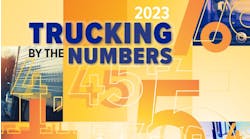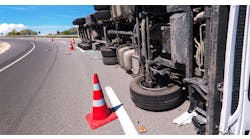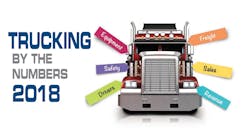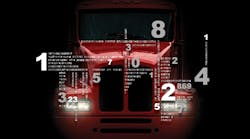Heading into this year's holiday season, manufacturing has been up, retail sales are high, and construction activity has been strong. So all-in-all, that means business has been good for trucking companies. However, economic growth potential has been limited because goods can’t move efficiently enough through the clogged supply chain.
“This is the worst supply chain crisis since World War II,” Don Ake, FTR Transportation Intelligence’s VP of commercial vehicles, said during FTR’s November update on the commercial vehicle market. He pointed out that while there is no food rationing in the U.S., like during WWII, commercial vehicle and trailer makers are rationing their offerings to fleets this year.
For starters, component supplies for commercial vehicles remained relatively stagnant all year. Factory output in Asia has been around 50% of pre-pandemic levels. There is a global shortage of containers as crates pile up at coastal and inland ports, warehouses are at full capacity because of a lack of equipment and workers, and issues within the chassis market due to imposed tariffs continue to hinder the efficient movement of freight.
The sluggish supply chain has, in turn, forced transportation analysts and economists to slash their Class 8 truck and trailer forecasts for 2022 from previous outlooks. These new forecasts are, however, projected to outpace OEM production in 2021 because truck orders that were expected to be built in 2021 are being rolled over into 2022.
In addition to not being able to procure new equipment, COVID-19 labor shortages and other trucking industry-related bottlenecks have impacted what was an already persistent shortage of commercial truck drivers. This year, American Trucking Associations has upped its estimated shortage of drivers to 80,000 from 60,000 in 2018. ATA’s latest snapshot of the truck driver shortage shows that if current trends persist, over the next decade, the driver shortage could hit 160,000.
Given the ongoing labor shortage—heading into the holidays the Bureau of Labor Statistics projected more than 10 million job openings in the U.S.—it's really no surprise that for the fifth consecutive year, the driver shortage topped the American Transportation Research Institute’s (ATRI) overall industry concerns list.
And, partially compounded by the impacts of the current supply chain crunch, infrastructure has been at the forefront of discussions this year. Touted as a once-in-a-generation investment in hard infrastructure like bridges, roads, and public transit, President Joe Biden signed a more than $1 trillion bipartisan infrastructure deal into law on Nov. 15.
For this year’s Trucking by the Numbers package, we’ve done our best to set the stage for some of the new challenges and emerging trends as the trucking industry continues to navigate the current supply chain crisis. Sections in the downloadable PDF (available by clicking the download link below) are broken up by overview, drivers, equipment, emissions and efficiency, traffic, and safety.









